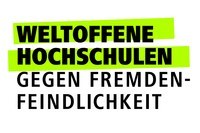The paper "Structured temporal representation in time series classification with ROCKETs and Hyperdimensional Computing" by Kenny Schlegel, Dmitri A. Rachkovskij, Denis Kleyko,Ross W. Gayler, Peter Protzel, and Peer Neubert has been accepted for publication in the Data Mining and Knowledge Discovery journal.
Abstract: Time series classification poses significant challenges due to the inherent temporal order of the data points and the existence of sequential dependencies between them. The ROCKET family, featuring methods like MiniROCKET, MultiROCKET, and HYDRA, is currently a leading approach in this domain, leveraging convolution kernels to aggregate temporal features into encodings for linear classifiers. However, these models encode temporal features over short temporal windows and then aggregate them as an unordered set of encodings over the longer temporal window of the entire data sequence. This prevents these models from capturing any longer sequence structure. To address this design drawback, we propose integrating hyperdimensional computing into ROCKET methods to explicitly incorporate temporal order of the short-term features within the entire time series. This approach enhances the discriminative power of encodings generated by MiniROCKET, MultiROCKET, and HYDRA where longer-term structure exists in the data, leading to increased classification performance with minimal computational overhead. More specifically, we introduce a method to represent time series as high-dimensional vectors through multiplicative binding of ROCKET encodings with encodings representing temporal order, applying this approach across various ROCKET methods. Additionally, we explore different high-dimensional vector representations of temporal order, yielding diverse similarity kernels that enhance classification accuracy. Through experiments on synthetic datasets, we highlight the limitations of ROCKET methods in handling temporal dependencies and show how the methods based on hyperdimensional computing overcome these limitations. Furthermore, our extensive experimental evaluation with real-world datasets included in the recent UCR archive [1] and additional datasets from [2], validates the advantages of our approach, consistently achieving classification improvements across all ROCKET methods that integrate hyperdimensional computing. Notably, our best model achieves a relative error rate reduction of over 50% compared to the best ROCKET model on several UCR datasets.





